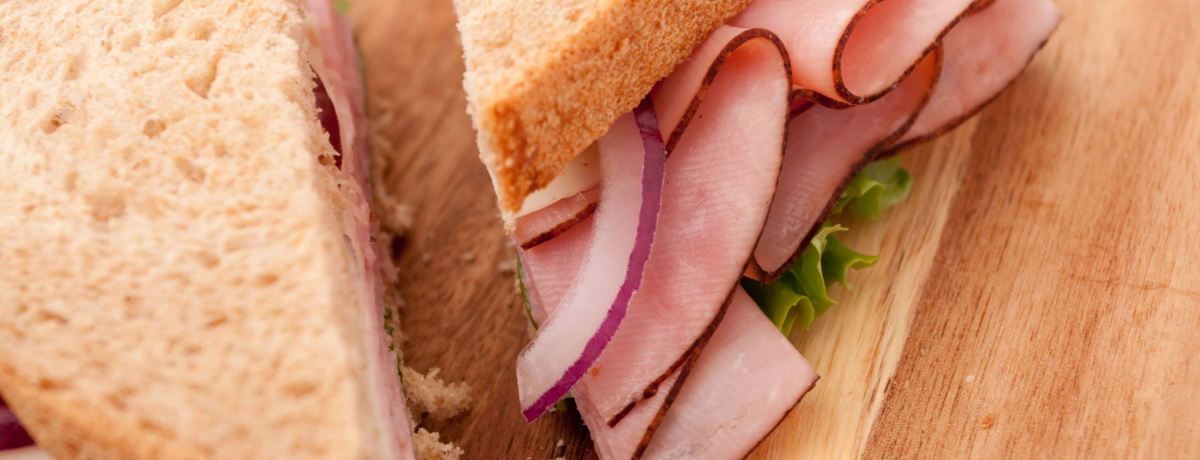
The Ham Sandwich Theorem: A Slice of Mathematical Wonder
We recently shared an article by Scientific American on our social channels that applied the Ham Sandwich Theorem to gerrymandering in politics. You can read that article here. And for more on this topic, check out these gerrymandering math modeling modules.
It’s a very interesting topic, but what exactly is the Ham Sandwich Theorem anyway? Let’s explore.
Imagine you're at a picnic, enjoying a beautiful day outside. You have a delicious ham sandwich in front of you, and you decide you want to share it equally with a friend. But here's the catch: you want to make just one straight cut that divides not just the bread, but also the ham and any other layer in that sandwich, perfectly in half.
It sounds like a simple task, right? Well, this very scenario opens the door to a fascinating piece of mathematics known as the "Ham Sandwich Theorem."
A Theorem That Cuts Through Complexity
The Ham Sandwich Theorem isn't about sandwiches, per se. It's actually a principle in geometry that can apply to a whole range of situations. The theorem states that no matter how you toss and turn three objects (like the slices of bread and ham in your sandwich), there's always a way to make a single, straight slice that divides each of these three objects into two equal parts.
Now, let's break this down a bit. Imagine each component of your sandwich – the two slices of bread and the piece of ham – represents a different "object" floating around in space. According to the theorem, no matter how these objects are oriented, there's a magical invisible plane – think of it as an ultra-precise, ghostly knife – that can slice through all three objects, cutting each one exactly in half.
See the Ham Sandwich Theorem explained further in this video from Numberphile:
More Than Just Food for Thought
What's truly remarkable about the Ham Sandwich Theorem is its universality. It's not just about food items; it applies to a wide array of scenarios. Think of it in terms of real-world issues: dividing land, resources, or even data in a way that's fair and equitable. The theorem assures us that, theoretically, it's always possible to find a "fair cut," regardless of how complex the situation might seem.
The Magic Behind the Math
At its core, the Ham Sandwich Theorem is about finding balance and equality in complex systems. It uses dimensions to measure space. For our sandwich, we're working in a three-dimensional world (because real-life sandwiches aren't flat drawings on paper!). The theorem tells us that for any number of dimensions (not just three, but four, five, or even more), there exists a way to make that equitable cut.
From Theory to Table
So, the next time you're about to enjoy a sandwich, take a moment to appreciate the mathematical wonder behind it. The Ham Sandwich Theorem is a reminder that math isn't just about numbers and equations; it's deeply intertwined with the world around us, offering solutions and insights into our everyday lives. So, here's to finding the perfect cut, in sandwiches and beyond!
Written by
COMAP
The Consortium for Mathematics and Its Applications is an award-winning non-profit organization whose mission is to improve mathematics education for students of all ages. Since 1980, COMAP has worked with teachers, students, and business people to create learning environments where mathematics is used to investigate and model real issues in our world.
